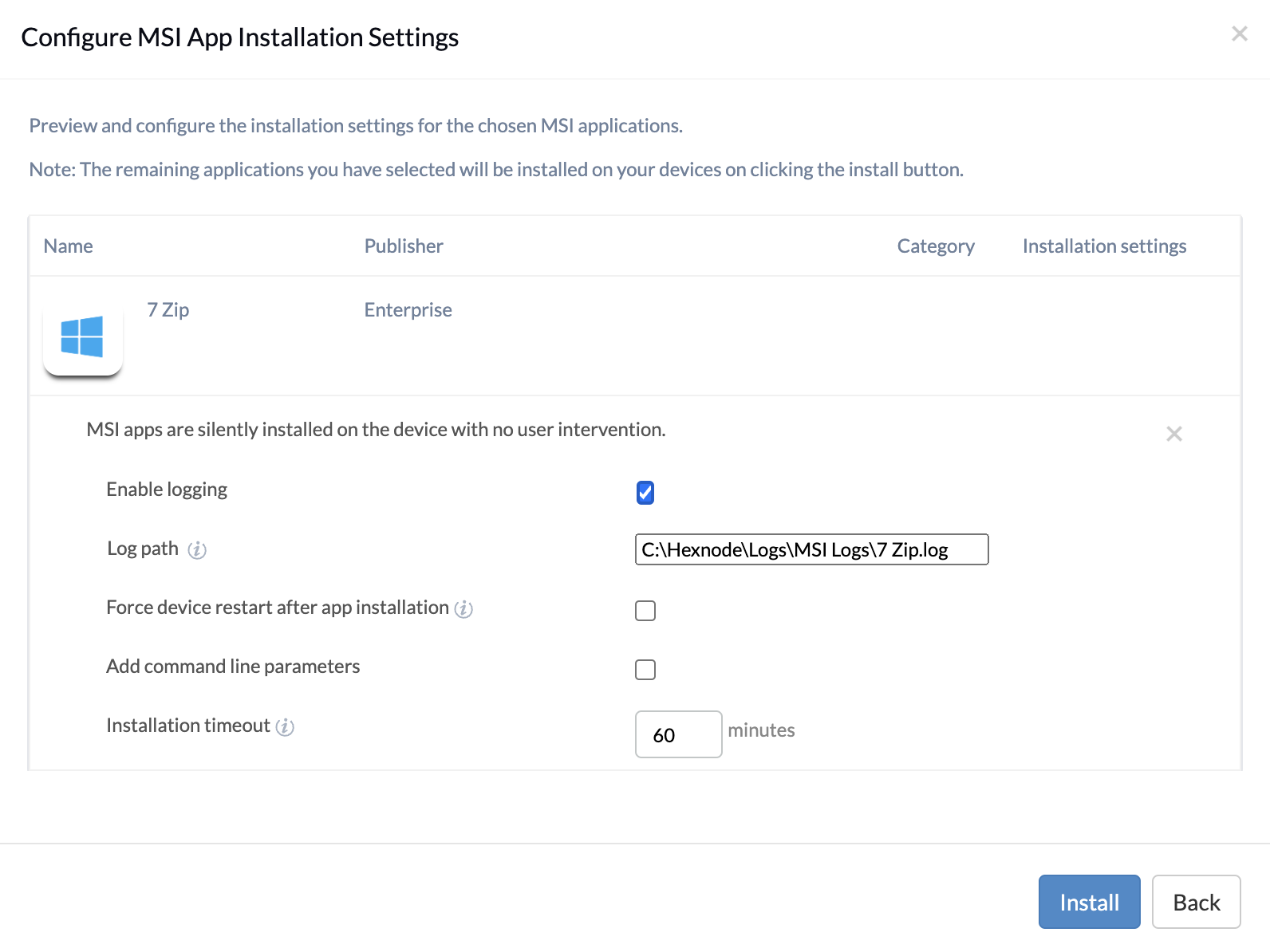Category filter
Distribute enterprise apps to Windows devices
This article deals with the distribution of enterprise apps on Windows devices.
Enterprise apps are custom apps developed by an organization or a third party to be used within the organization. These apps are also known as internal or in-house apps.
Since these apps contain proprietary business information, many organizations do not host these apps on public distribution channels (Microsoft Store for Windows devices). In such cases, they rely on enterprise app stores that can seamlessly deploy their internal apps within the organization.
Hexnode delivers its own enterprise app store to securely distribute apps, whether store or internal, to the organization’s devices. In the case of Windows devices, administrators can silently deploy enterprise (MSI/MSIX) apps to the managed devices without compromising data security.
Add enterprise apps to Hexnode app inventory
An enterprise app must first be uploaded to the Hexnode app inventory before its distribution.
- Log in to your Hexnode portal.
- Navigate to Apps.
- Select +Add Apps > Enterprise App.
- Choose the platform as Windows.
- Provide the App Name.
- You can either upload with:
- MSI file: Click on Choose the MSI File and select a file from the system.
- MSIX file: Click on Choose the MSIX File and select a file from the system.
- From Manifest URL: Input the URL to the app.
Or
Or
- Select an app category or input a new category by clicking on the + button.
- Provide a description for the application and click Add to upload the file.
- SHA-256 Checksum: Hexnode uses the SHA-256 checksum to ensure that the apps are not corrupted while uploading them to the portal and deploying them to devices. Provide the SHA-256 checksum(hash) of the file to verify the file integrity before distribution. If left blank, Hexnode UEM will skip the file verification.
- If it’s an MSI file, specify the device location where the MSI file should be installed. For example, C:\Program Files.
- While uploading the MSI/MSIX file, you can check the Notify admin via email once app upload succeeds/fails option to receive the email notifications on the app upload status.
- Click Add to upload the file.
Deploy the apps to target devices
The apps added to the app inventory can be distributed to the devices using the remote action or Required Apps policy.
Install apps via Actions
Method 1
- Navigate to Manage > Devices.
- Click on the device.
- On the device summary page, click Actions > Install Application.
- Select the app.
- Click Configure to specify the installation settings.
- Click Install.
Install apps via Policy
- Navigate to Policies.
- Create a new policy with the New Policy button or select an existing policy.
- From Windows > App Management, select Required Apps.
- Click on Configure and +Add button to either add an app or a group of apps from the app inventory.
- Select the required app(s) and click on Done.
- Configure the installation settings and click Save.
- Next, associate the policy with the target devices by navigating to the Policy Targets tab.
- Select the required Devices/Device Groups/Users/User Groups/Domains to which the policy is to be associated.
- Click on Save.
Installation settings
For MSI apps, Hexnode enables you to configure various app installation settings during deployment via the Required Apps policy.
- Enable logging: This setting helps specify the MSI app’s default logging mode. Ticking this option enables the logging service, and the Windows Installer records the errors and events into logs on the specified log path of the device. The diagnostic data contained in the logs helps the user to troubleshoot in case the installation fails.
- Log path: Specify a custom path for the output log file. You can provide the complete path of a folder along with the desired file name and format. C:\Hexnode\Logs\MSI Logs\
.log is set as the default log path.
- Force device restart after app installation: Upon successful installation, the system restarts automatically when this option is selected.
- Installation Timeout: If the app installation process does not complete within the specified time duration, it will be forcefully terminated. The minimum and maximum time duration is 10 and 60 minutes respectively.
- Add command-line parameters: You can specify additional parameters by ticking this option while distributing the MSI app to the device. These command-line parameters help you modify the installation process and other related operations on the device.




